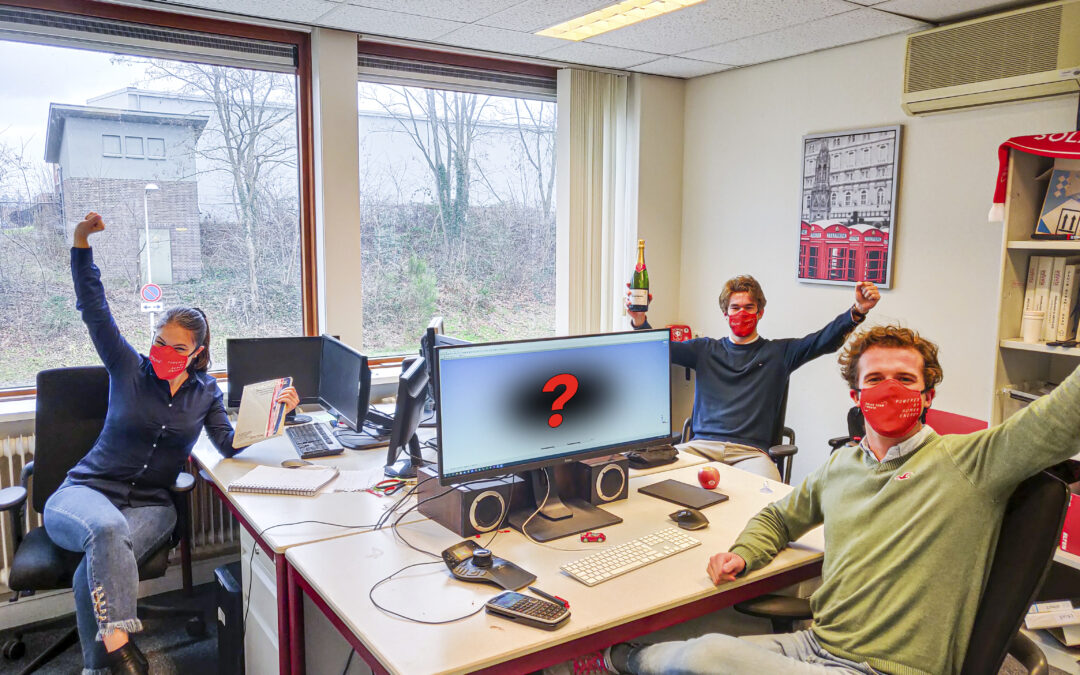Photo by Camiel Lemmens
EN | NL
Team 2021 faced many challenges on their way towards a race in 2021. Six months have passed already in which the team focused on creating the most efficient solar car possible. Now the design phase is over and the shape of the car is finalised. Before we reveal the design to you on the 12th of March, we will dive into how the different technical sub-teams experience this phase and what challenges they faced and what challenges are ahead. This week’s sub-team is Aerodynamics

What is the Aerodynamics sub-team doing?
In short, this sub-team is designing the outer shape of the car. Taking into account the Bridgestone World Solar Challenge Regulations, they work on optimising the air flow around the car. This year, 3-wheeled and 4-wheeled cars are allowed which opened up possibilities in the car design. Out of all disciplines, aerodynamics can make the car the fastest. This means aerodynamics can make the car go a lot faster while not needing a lot of energy. Moreover, the shape determines how the solar cells and mechanical parts can be arranged. Therefore, this sub-team started one month earlier than all other teams to work ahead.
How was the first month alone in the office like?
“The recruitment team did a really good job in matching us together” Tim laughs when thinking back about their first month at the office. “It was quite strange to start alone at Kanaalstraat, but it also made us bond very well. We were helping each other a lot in the beginning because none of us ever designed a solar car”. In their first weeks, they started with tutorials and drawing boxes to understand the basics. Soon, boxes turned into solar cars and according to Tim, “you’d be surprised how fast you can learn that if you invest some time”.
How did you come to the new design?
“The regulations opened up many new possibilities, but that doesn’t mean you have to reinvent the wheel” Tim says when thinking about the different car shapes. There were three main points that determined the shape of the car. First, there are the wheels. The regulations would allow 3-wheeled cars, but Solar Team Twente is most experienced with 4 wheels. Finally, all solar cells must fit on and PVC-Pat must fit in the car. This manakin is a new part of the 2021 rules. “There was a lot to consider and within the entire technical team, we had many discussions until we made the final decisions”
What were the best moments as a sub-team so far?
Aerodynamics is a lot about simulating. In that sense it is easy: you draw different shapes and simulate the air flow around that shape. “However, sometimes it is really difficult to predict the air flow. Of course you know the theory, but we had some surprising outcomes in our simulations” Tim laughs. Another challenge were the simulation times. The Aerodynamics team has a special computer in the office to run the simulations but one simulation takes around 7-8 hours. “Imagine you want to try out an idea you had, and then you have to wait 8 hours to see the results. That is a lot of time for the high time pressure we have in Solar Team Twente”. Luckily, one of the team members was able to reduce the simulation time significantly. “Together with the final decision, that was one of the best moments in our sub-team so far.”
The final decision
“The deadline for the final shape had been set for a long time, but the closer we came, the more certain we were that the decision was not easy. We had a number of different designs: some were better from the Mechanics side, some better from the Aerodynamics side.” And which decision did they make in the end? “That is something you need to wait a little longer for, but the entire technical team is proud of the car we’ve designed in the past months. We cannot wait to finally present it to the world on the 12th of March 2021!”
Follow us on Instagram, Facebook, Twitter, or LinkedIn to stay up-to-date!


Recent Comments